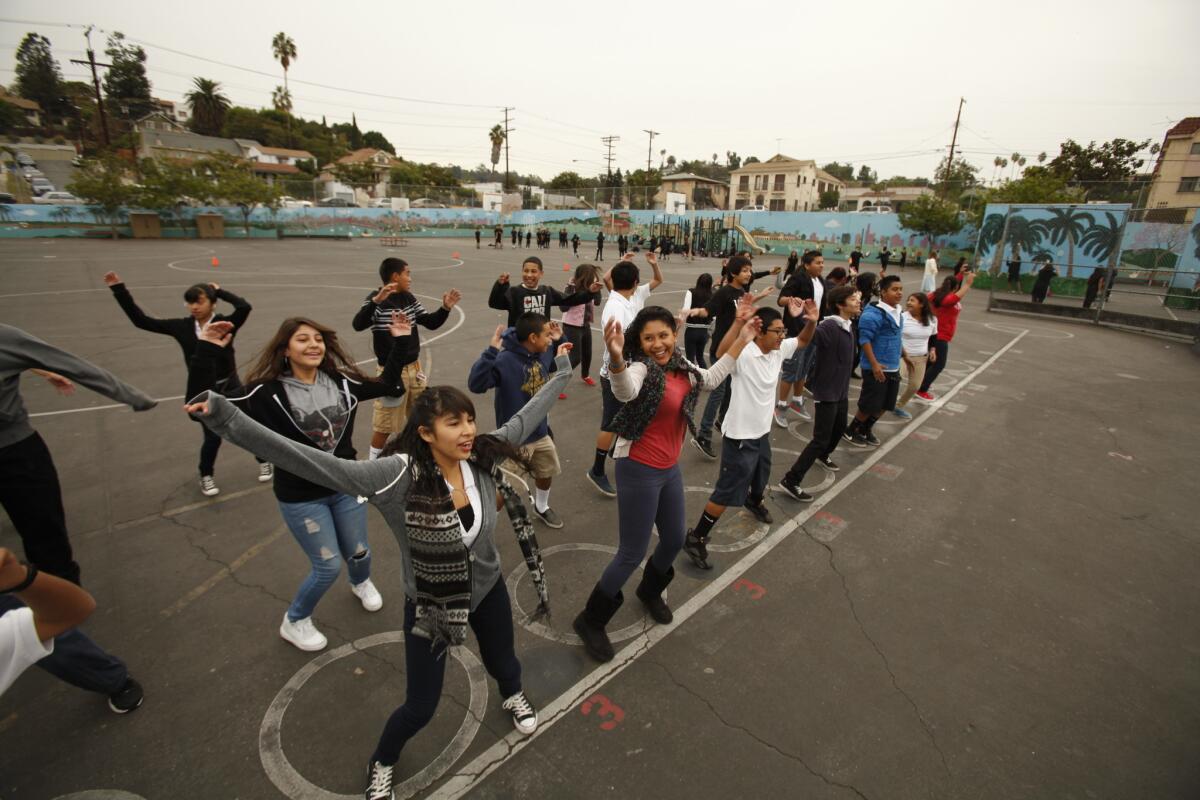Editorial: Physical fitness tests may make some students feel bad, but that’s no reason to stop doing them

Physical education in California schools could use an overhaul. Despite the requirement that students engage in regular physical activity during each school week, the fitness of the state’s students isn’t improving. In fact, it has been sliding for the last five years; in 2018-19, only 60% of students tested were considered aerobically fit. Since we’re talking here about the future health of our state, we should all be concerned.
The only reason we know about the problem, though, is that the state tests students’ fitness in fifth, seventh and ninth grades and reports on the results. That’s why Gov. Gavin Newsom had the wrong idea when he called for suspending those tests for three years while the Department of Education examines whether and how they should be revamped.
The tests measure various kinds of fitness, such as strength and flexibility. Students run a mile and perform other exercises. Their body mass index — an estimate of their leanness or obesity — is also calculated.
Newsom has legitimate concerns. For one thing, students generally take the tests together; it’s all too clear, and can be humiliating, when kids can’t keep up on a mile run. In addition, certain tests have parameters for judging the fitness of girls and boys, but those parameters are meaningless for transgender students and those students who don’t identify with one sex or the other. Furthermore, the tests are unlikely to turn students into fitness enthusiasts.
But there should be ways to resolve these problems, such as developing better metrics for the small percentage of nonbinary students, without halting the tests altogether. Schools might need to pull kids out of gym class for small-group testing. Just as with math tests, a student’s individual performance shouldn’t be public fodder for conversation. Certainly, students should never be weighed in front of others.
But doing away with the tests won’t help students. True, the body mass index, known as BMI, is only a rough tool for estimating obesity, but it certainly can indicate that a second look is in order. And parents should be aware if their children are heading for health problems; cases of Type 2 diabetes, the type most commonly associated with obesity, have been increasing among children.
In fact, the Department of Education should be taking a much deeper look at physical fitness programs and not just focusing on the tests. Today’s gym classes aren’t bringing about the hoped-for results. Revamping them could mean introducing more activities, such as hiking, yoga and noncompetitive games, that students might be more likely to do outside of school and throughout their lives. We’re not all going to play on the football team, but most people can find an activity they enjoy that will keep them moving toward better health throughout their lives.
More to Read
A cure for the common opinion
Get thought-provoking perspectives with our weekly newsletter.
You may occasionally receive promotional content from the Los Angeles Times.










